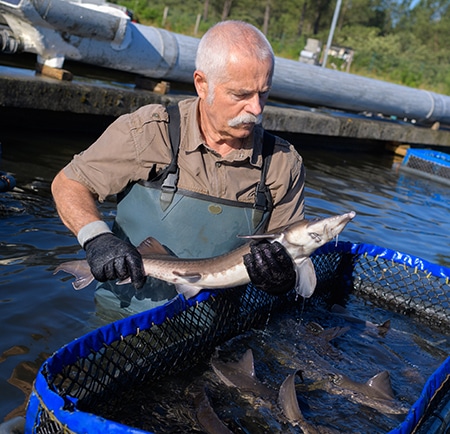The Rendering Process
The types of raw material that can be rendered are almost as wide-ranging as the number of uses that rendered products can be put to. Everyday items such as crayons, soaps, cosmetics, candles, pharmaceuticals, paints, varnishes, lubricants, cleaners, perfumes, and fertilisers contain rendered products.
They are also used in pet foods and animal and fish farming. Other rendered products are used in energy production and are the main ingredient in biofuel, which is helping to green the transport industry.
Renewal, Not Disposal
Rendering is a sustainable way to process large volumes of animal by-products (ABM), diverting them away from alternative disposal methods such as landfill, composting, and incineration – which are all problematic in terms of leaching, pollution, infection, poison, and contamination. This virtuous cycle is clean and safe, the rendering industry is extremely high-tech and rigorously regulated.
Rendering in Ireland
Plants handling or processing animal by-products must be approved by the competent national authority in accordance with European Commission Regulation No 1069/2009. In Ireland, this is the Environmental Protection Agency (EPA). There are just a handful of licensed rendering companies in Ireland; College Group is the largest processor in Ireland.

How Does Rendering Work?
Rendering takes bio-waste from a range of sources – abattoirs, knackeries, slaughterhouses, farms, food processors, butcheries, supermarkets, restaurants, and other agri-food outlets – to produce useful products such as tallow, meal, protein, and oil.
Rendering is essentially a process to separate water, fat, and protein components. There are various different ways to render. The material may be processed by wet or dry means; in wet processing, boiling water or steam is added to the material to separate out the fat, while in dry processing, fat is released by dehydrating the raw material. The temperature range can also be different, with some systems using high temperatures and others low temperatures. Finally, some plants render materials in batches, while others work on a continuous cycle.
However the facility operates, the rendering process is essentially one whereby material is stripped of contaminants (such as metal), cut, ground to a uniform size, and fed into a cooker which frees fat from protein and bone. The resulting slurry is then separated into solids and liquid fats. Separation can be achieved by settling, decanting, or using a centrifuge. There are subsequent processing cycles which refine the material further, removing impurities and clarifying products. Throughout the process, water vapour and gases are removed and filtered or neutralised.
At College Group, we use a low-temperature wet rendering (LTWR) process. You can see more about this on our Technology page.
Categories of rendering
Depending on the source and type of raw materials (or feedstock) used, rendered products fall into three different categories:
Category 1
These products can only be used for energy or fuel production (e.g. incineration in cement manufacturing, the main ingredient of biofuel)
The feedstock for these is high risk, such as specified risk material (for example, animals that have tested positive for BSE), fallen stock with a risk of disease, and international catering waste.
Category 2
These products can be used for industrial applications (e.g. as fuel, for fur feed, and as fertiliser).
Category 2 feedstock is material that isn’t fit for human consumption and fallen stock without SRM. It is not fit for animal consumption.
Category 3
These products can be used for human contact products (e.g. ingredients in soaps and cosmetics, added to pet food and animal feeds).
The feedstock for this category is material fit for human consumption at the point of slaughter and domestic catering waste.
Processing is always segregated to prevent cross-contamination of categories of waste or between different species.
College Group Products
At College Group, we produce Category 1 products at our facility in Nobber, Co. Meath, and Category 3 products at our facility in Monnery, Co. Cavan. See our product pages for more information.


